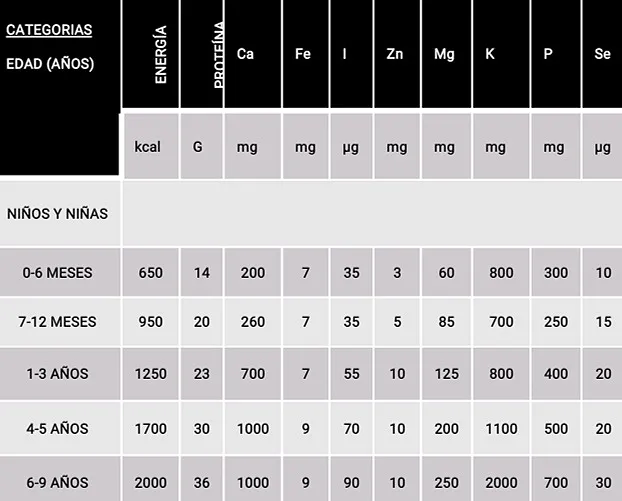ByOnlinecourses55

Recommended intakes - nutrition
A healthy diet should be characterized by being balanced from a nutritional perspective, with levels of energy and nutrients in appropriate quality and quantity to meet the body's needs without falling into excess, allowing to reach an optimal state of health.

Each nutrient has different quantitative requirements. Macronutrients, which provide energy, should be consumed in grams per day. On the other hand, vitamins and minerals are needed in smaller amounts, some in milligrams and others only in micrograms daily.
To determine the approximate amounts of nutrients, there are standards or reference values that are divided into two complementary categories:
Recommended Intakes [RI]: These indicate the amount of energy and nutrients necessary to maintain health in healthy people. These recommendations are included in tables for each country according to the conditions of their populations.
Recommended energy intakes: These are based on an average level of activity, with adjustments depending on the level of physical activity. For example, the tables for the Spanish population suggest reducing intakes by 10% for sedentary people and increasing them by 20% for people with intense activity.
Possible nutrient losses:
Examples:
Applications of recommended intakes:
Excerpt from tables of recommended daily intakes for the Spanish population:

Accredited dietary intakes include:
Nutritional Objectives [ON]: Scientifically based guidelines to prevent chronic diseases.
The nutritional objectives for Spain suggest that lipids contribute between 25% and 35% of calories, preferring monosaturated oils such as olive oil.
To achieve the nutritional targets, food-based dietary guidelines [FBPGs] are developed to provide simple and professional instructions for a balanced diet.
Characteristics of the GABAS:
Want to learn more about holistic nutrition?